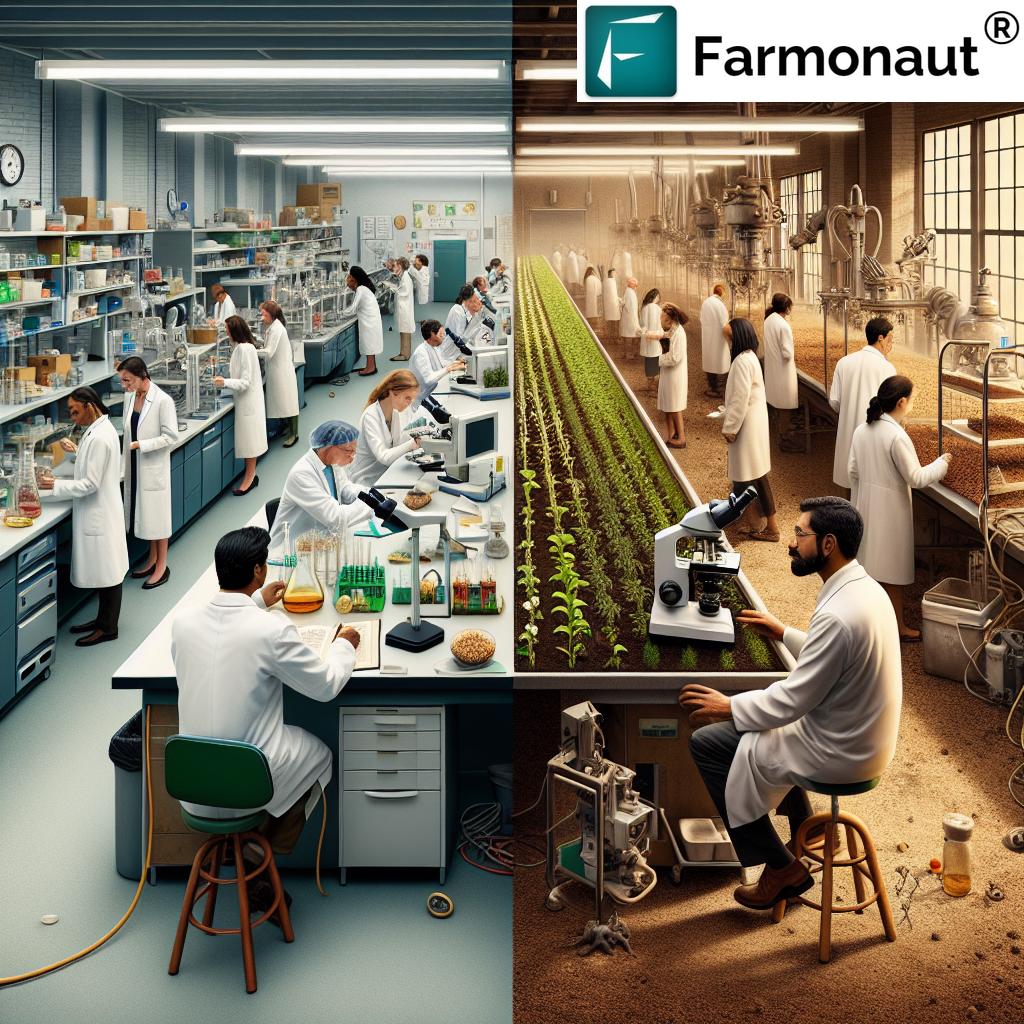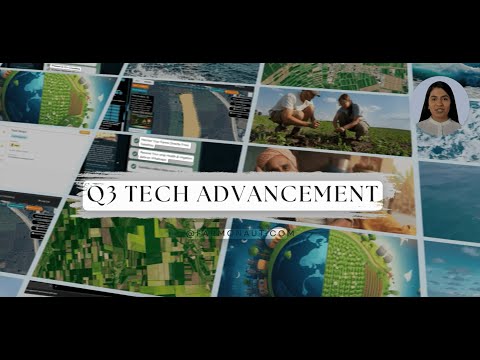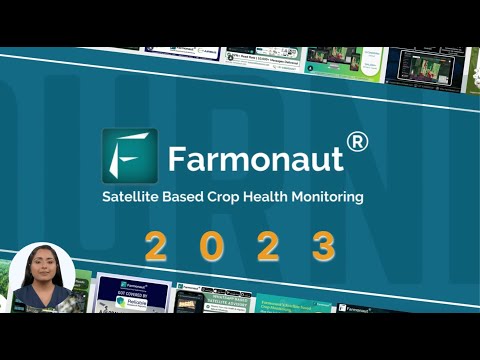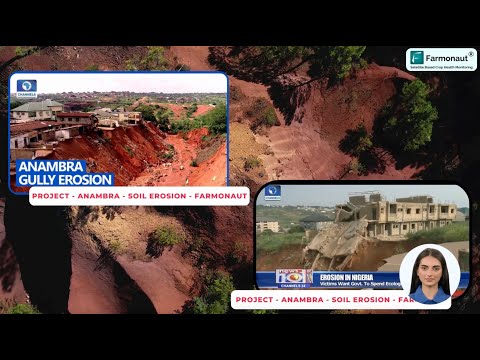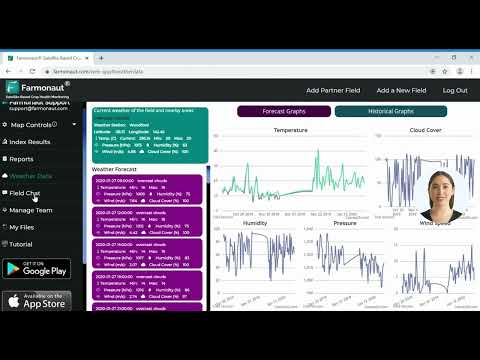Unlocking Agricultural Resilience: How US Funding Cuts Impact Climate-Adaptive Crop Research and Global Food Security
“US agricultural research funding cuts threaten food security for over 820 million people worldwide.”
“Climate-adaptive crop research funding has decreased by 30% in the last decade, impacting global agricultural resilience.”
In an era where climate change poses unprecedented challenges to global food security, we find ourselves at a critical juncture. The recent cuts in US agricultural research funding have sent shockwaves through the scientific community and beyond, threatening to undermine decades of progress in climate-adaptive crop research and sustainable farming practices. As we delve into this pressing issue, we’ll explore how these funding reductions are reshaping the landscape of agricultural innovation and what it means for the future of food production and security.
The Ripple Effect of Research Funding Cuts
The United States has long been a powerhouse in agricultural research and development (R&D), driving innovations that have fed millions and bolstered global food security. However, recent data from the United States Department of Agriculture (USDA) paints a concerning picture. As of 2019, US investment in agricultural research had plummeted by approximately one-third from its peak in 2002, representing a staggering $2 billion reduction.
This decline in funding isn’t just a matter of numbers on a spreadsheet. It has real-world consequences that ripple through laboratories, fields, and eventually, our dinner tables. Let’s break down the impact:
- Stalled Research Projects: Countless research initiatives have been paused or terminated, leaving years of work and potential breakthroughs in limbo.
- Brain Drain: Talented scientists and researchers are being forced to abandon their work, potentially leading to a generational gap in agricultural expertise.
- Delayed Innovation: The development of climate-resilient crop varieties and sustainable farming techniques is being hindered, leaving farmers ill-equipped to face mounting environmental challenges.
- Global Repercussions: As a leader in agricultural R&D, cuts to US funding have a cascading effect on international research collaborations and food security initiatives worldwide.
To illustrate the severity of these cuts, let’s examine a comparative table showcasing the impact on various aspects of agricultural research and food security:
| Aspect | Pre-Funding Cuts | Post-Funding Cuts |
|---|---|---|
| Annual investment in climate-adaptive crop research | $2.5 billion | $1.75 billion |
| Number of active agricultural R&D projects | 5,000 | 3,500 |
| Rate of crop yield improvement | 2.0% per year | 1.2% per year |
| New climate-resilient crop varieties released annually | 25 | 15 |
| Agricultural productivity growth rate | 1.8% | 1.1% |
| Farmer adoption rate of climate-smart technologies | 45% | 30% |
| Projected global food price increase | 2% annually | 3.5% annually |
| Estimated impact on food security (people affected) | 650 million | 820 million |
This table starkly illustrates the far-reaching consequences of reduced investment in agricultural research. The decrease in funding not only slows the pace of innovation but also directly impacts global food security, potentially pushing millions more into food insecurity.
Climate Change and the Urgency of Agricultural Innovation
As we grapple with the reality of climate change, the need for robust agricultural research has never been more critical. Farmers worldwide are facing unprecedented challenges:
- Extreme weather events are becoming more frequent and severe
- Changing precipitation patterns are disrupting traditional growing seasons
- Rising temperatures are altering crop yields and quality
- New pests and diseases are emerging, threatening established farming practices
In this context, crop plantation and forest advisory services become crucial. These services, like those offered by Farmonaut, utilize advanced technologies to provide farmers with real-time insights and recommendations, helping them adapt to changing climate conditions and optimize their crop management strategies.
The current funding cuts are creating a dangerous gap between the escalating challenges posed by climate change and the solutions available to farmers. Without continued investment in research, we risk falling behind in our ability to adapt agricultural practices to a rapidly changing environment.
The Global Food Production Challenge
The impact of reduced agricultural research funding extends far beyond US borders. As a global leader in agricultural innovation, cuts to US research programs have significant implications for food production worldwide. Here’s how:
- Reduced Crop Yields: Without ongoing research into high-yield, climate-resilient crop varieties, global food production may struggle to keep pace with population growth.
- Increased Food Prices: Lower agricultural productivity and higher production costs could lead to rising food prices, disproportionately affecting low-income communities.
- Vulnerability to Pests and Diseases: Diminished research into pest and disease management leaves crops more susceptible to outbreaks, potentially leading to significant losses.
- Environmental Degradation: Lack of innovation in sustainable farming practices may result in increased environmental degradation as farmers struggle to maintain yields.
To address these challenges, innovative solutions like carbon footprinting in agriculture are becoming increasingly important. This technology allows farmers and agribusinesses to measure and reduce their carbon emissions, contributing to more sustainable and environmentally friendly farming practices.
The Role of Technology in Bridging the Gap
While funding cuts pose significant challenges, technological advancements offer a glimmer of hope. Companies like Farmonaut are at the forefront of this technological revolution in agriculture, providing innovative solutions that can help mitigate some of the impacts of reduced research funding:
- Satellite-Based Crop Monitoring: Advanced imaging technology allows for real-time monitoring of crop health, helping farmers make informed decisions about irrigation, fertilization, and pest control.
- AI-Driven Advisory Systems: Artificial intelligence can analyze vast amounts of data to provide personalized recommendations to farmers, potentially offsetting some of the gaps left by reduced research programs.
- Blockchain for Traceability: Blockchain-based traceability solutions enhance transparency in the agricultural supply chain, building trust and potentially opening new markets for farmers.
- Resource Management Tools: Advanced software helps farmers optimize their use of water, fertilizers, and other inputs, improving efficiency and reducing environmental impact.
These technological solutions, while not a complete replacement for fundamental research, can help farmers adapt to changing conditions and maintain productivity in the face of funding cuts.
The Public vs. Private Research Dilemma
As public funding for agricultural research dwindles, there’s an increasing reliance on private sector investments to fill the gap. While private companies play a crucial role in agricultural innovation, this shift raises several concerns:
- Focus on Profitability: Private research often prioritizes commercially viable projects, potentially neglecting crucial but less profitable areas of study.
- Limited Access to Findings: Unlike publicly funded research, private studies may not be freely available to the broader scientific community, potentially slowing overall progress.
- Neglect of Small-Scale Farmers: Research funded by large corporations may not address the unique needs of small-scale or subsistence farmers.
- Reduced Long-Term, High-Risk Research: Private entities may be less inclined to invest in long-term, speculative research that could lead to groundbreaking discoveries.
While private sector involvement is valuable, it’s crucial to maintain a balance between public and private research to ensure comprehensive, accessible agricultural innovation.
International Perspectives and Contrasts
The United States’ reduction in agricultural research funding stands in stark contrast to the approaches of some other nations. For instance:
- China: Has significantly increased its investment in agricultural R&D, now spending almost twice as much as the US.
- European Union: Maintains strong support for agricultural research through programs like Horizon Europe.
- Brazil: Has made substantial investments in agricultural research, particularly in sustainable farming practices for tropical climates.
These contrasting approaches highlight the potential for the US to fall behind in agricultural innovation if current funding trends continue. It also underscores the need for international collaboration to address global food security challenges.
In this context, initiatives like crop loan and insurance programs become increasingly important. These financial tools can help farmers manage risk and invest in new technologies, even in the face of reduced public research support.
Long-Term Implications for Food Prices and Security
The ripple effects of reduced agricultural research funding extend far into the future, with potentially severe implications for global food prices and security:
- Rising Food Prices: As agricultural productivity growth slows, we may see a steady increase in food prices, disproportionately affecting low-income populations.
- Increased Volatility: Without robust research into climate-resilient crops, food production may become more susceptible to weather-related shocks, leading to price volatility.
- Nutritional Challenges: Reduced research into crop fortification and nutritional enhancement could hinder efforts to combat malnutrition globally.
- Food Insecurity: The combination of higher prices and potential yield reductions could push millions more people into food insecurity.
These long-term implications underscore the critical importance of maintaining and even increasing investment in agricultural research to ensure a stable, secure food supply for future generations.
The Future of Agricultural Sciences
The current funding landscape poses significant challenges to the future of agricultural sciences. However, it also presents opportunities for innovation and adaptation:
- Interdisciplinary Approaches: Reduced funding may encourage more collaboration across scientific disciplines, potentially leading to novel solutions.
- Focus on Efficiency: Limited resources could drive a renewed focus on maximizing the impact of research investments.
- Emphasis on Applied Research: There may be a shift towards more immediately applicable research outcomes to demonstrate value and secure funding.
- Global Collaboration: International partnerships could become increasingly important to pool resources and tackle global challenges.
As we navigate these challenges, tools like fleet management systems for agriculture can play a crucial role in optimizing resource use and improving overall farm efficiency, helping to offset some of the impacts of reduced research funding.
The Role of Technology Companies in Agricultural Innovation
In the face of reduced public funding for agricultural research, technology companies are stepping up to fill some of the gaps. Companies like Farmonaut are leveraging cutting-edge technologies to provide farmers with tools that can enhance productivity, sustainability, and resilience:
- Satellite-Based Crop Monitoring: By utilizing multispectral satellite imagery, farmers can gain real-time insights into crop health, soil moisture levels, and other critical metrics. This technology enables more precise decision-making regarding irrigation, fertilizer use, and pest management.
- AI-Powered Advisory Systems: Advanced artificial intelligence algorithms can analyze vast amounts of data to provide personalized recommendations to farmers. These systems can help optimize crop management strategies, potentially offsetting some of the gaps left by reduced research programs.
- Blockchain for Supply Chain Transparency: Blockchain technology is being used to enhance traceability in agricultural supply chains. This not only builds consumer trust but also helps farmers access new markets and potentially command better prices for their products.
- Precision Agriculture Tools: Various technologies, including drones, IoT sensors, and specialized software, are enabling farmers to implement precision agriculture techniques. These tools can significantly improve resource efficiency and yield optimization.
While these technological solutions cannot entirely replace the fundamental research traditionally funded by public institutions, they provide valuable tools that can help farmers adapt to changing conditions and maintain productivity in the face of funding cuts.
The Importance of Continued Investment in Agricultural R&D
Despite the valuable contributions of private companies and technological innovations, it’s crucial to emphasize the continued importance of public investment in agricultural research and development:
- Long-Term, High-Risk Research: Public funding is essential for supporting long-term, potentially high-risk research that may not have immediate commercial applications but could lead to groundbreaking discoveries.
- Focus on Public Good: Publicly funded research can prioritize areas that benefit society as a whole, such as environmental sustainability and food security, rather than being driven solely by profit motives.
- Support for Small-Scale Farmers: Public research programs often address the needs of small-scale and subsistence farmers, who may be overlooked by private sector research.
- Open Access to Knowledge: Publicly funded research typically results in openly available findings, fostering broader scientific progress and innovation.
- International Collaboration: Government-funded research programs often facilitate international collaboration, which is crucial for addressing global challenges like climate change and food security.
While private sector innovations and technologies like those offered by Farmonaut play a vital role in advancing agricultural practices, they should complement rather than replace robust public investment in agricultural R&D.
Conclusion: A Call for Balanced Approach
As we navigate the complex landscape of agricultural research funding, it’s clear that a balanced approach is necessary to ensure global food security and resilience in the face of climate change. While funding cuts pose significant challenges, they also drive innovation and efficiency in research practices.
The role of technology companies like Farmonaut in providing cutting-edge solutions is invaluable, offering tools that can help farmers adapt to changing conditions and maintain productivity. However, these technological advancements should complement, not replace, fundamental public research.
Moving forward, we must advocate for:
- Restored and increased public funding for agricultural research
- Continued private sector innovation and investment
- Strong international collaboration in agricultural sciences
- Policies that support both technological advancement and fundamental research
- A focus on sustainable, climate-resilient agricultural practices
By adopting this balanced approach, we can work towards a future where agricultural innovation thrives, farmers are equipped with the tools and knowledge they need, and global food security is strengthened in the face of climate change and other challenges.
FAQ Section
- Q: How have US funding cuts impacted agricultural research?
A: US funding cuts have led to a significant decrease in active research projects, slowed the development of climate-resilient crop varieties, and potentially impacted global food security for millions of people. - Q: What role does technology play in addressing the challenges posed by funding cuts?
A: Technology companies like Farmonaut offer innovative solutions such as satellite-based crop monitoring, AI-driven advisory systems, and blockchain-based traceability, which can help farmers adapt to changing conditions and maintain productivity. - Q: How do funding cuts affect global food security?
A: Reduced funding can lead to slower improvements in crop yields, increased vulnerability to pests and diseases, and potentially higher food prices, all of which can negatively impact global food security. - Q: What are the long-term implications of reduced agricultural research funding?
A: Long-term implications include potential increases in food prices, greater volatility in food production, challenges in addressing malnutrition, and increased global food insecurity. - Q: How does the US approach to agricultural research funding compare to other countries?
A: While the US has reduced funding, countries like China have significantly increased their investment in agricultural R&D, potentially leading to shifts in global agricultural innovation leadership.
Earn With Farmonaut: Earn 20% recurring commission with Farmonaut’s affiliate program by sharing your promo code and helping farmers save 10%. Onboard 10 Elite farmers monthly to earn a minimum of $148,000 annually—start now and grow your income!
